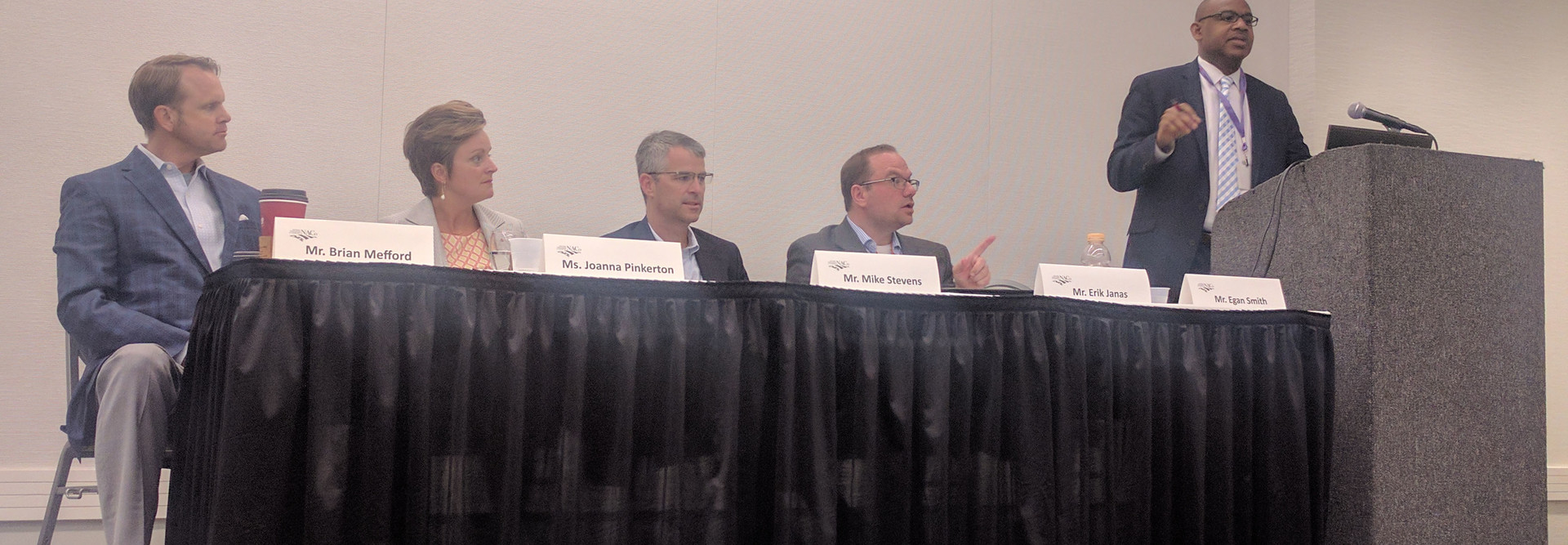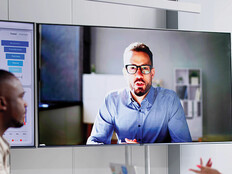NACo 2017: Collaboration Makes Columbus, Ohio’s Smart City Efforts Possible
Regional and private sector collaboration are proving to be the engine behind Columbus, Ohio’s remarkable smart city build-out, which is quickly revolutionizing the city.
In June, Columbus beat out 77 other cities to win the U.S. Department of Transportation’s Smart City challenge, a crown that came with a $50 million grant toward the effort.
But the momentum behind the Smart Columbus initiative neither started nor stopped there. Since the award, the city has gathered an additional $277 million to further the project, which aims to drive economic growth, spur innovation, enable an increasingly mobile workforce and, ultimately, improve quality of life for city residents.
A main element of the city’s mission to improve citizen’s lives lies in connected transportation and the mobility sector, particularly because counties own 46 percent of public road miles and are involved in 27 percent of public transit systems.
In Columbus, city officials and private partners alike are hoping to build upon existing transit and connectivity infrastructures to alleviate traffic stress and help those in lower socio-economic areas reach doctors appointments and job opportunities, among other tangible community challenges.
Now, one year into the four-year grant, smart city mobility projects are seeing progress. But without collaboration and buy-in from public and private partners across the county, the smart city initiative would have stalled in its tracks, according to a July 23 panel at the National Association of Counties 82nd Annual Conference and Exposition that sought to explore the collaborative efforts of the county, city and private sector partners, including the Transportation Research Center, an independent automotive proving ground located 40 miles northwest of Columbus.
SIGN UP: Get more news from the StateTech newsletter in your inbox every two weeks
Columbus Leads a Changing World with Public-Private Partnerships
On the panel entitled “Smarter Cities, Smarter Counties: How Intelligent Transportation Solutions Are Driving Regional Connectivity,” Mike Stevens, Columbus’s chief innovation officer and smart city lead, attributed much of this collaborative spirit to the city’s unique approach.
“The Columbus Way highlights the private-public partnerships that we’ve accomplished here in central Ohio over the last 25 to 30 years, and that’s bringing the private sector to the table, bringing Ohio State University to the table, bringing our elected leadership to the table, and having everyone come together around a common vision, purpose and goals that advance the success of the community,” he said.
Erik Janas, deputy county administrator for Franklin County, said county leadership is invested in the success of Columbus’s initiative because it will improve citizen lives not only in the city itself, but also in the 40-plus rural and suburban communities surrounding the city. It also has the potential to positively impact adjacent counties in Ohio.
“There are other policy initiatives at the county level that we think this program can address,” said Janas, pointing to an energy study the county is undertaking with several partners that aims to understand the county’s energy use and how connected technology can introduce more efficient and better-understood energy policies.
He also points to possible advantages in the provision of health and human services, such as easier access to medical care and job training and new approaches to reducing homelessness and infant mortality rates.
“There are several ways that this initiative can touch what county government does — that is really important to understand,” said Janas.
As the city’s first chief innovation officer, Stevens said the Smart Columbus initiative is a way to ensure the city maintains an economic advantage in a changing world.
On the other side of the coin, private sector partners have found that local governments are more accepting of partnerships because they can prove mutually beneficial, according to Brian Mefford, CEO of Connected Nation Exchange.
“In years past, it was ‘over my dead body’ that counties would allow a private company to use excess fiber or another resource. But now that’s changed because we both are going to gain from that collaboration,” he said.
“It comes down to some very human elements, having conversations to say, ‘Here are our assets and here are our objectives.’ And that’s what you’re seeing these folks accomplish in Columbus, having those types of conversations about what each side is trying to achieve, what we have to bring to the table,” said Mefford. “It’s not rocket science, it’s about having those conversations and then bringing it back to the practical side about how we now make that happen.”
While challenges lie ahead and many of the pilot programs have uncertain outcomes, ultimately, Stevens noted, all stakeholders have something to gain from furthering smart city technology:
“We are concerned on both the public and private sector side about this radical transformation that’s occurring in mobility, and we don’t want to get left behind — we don’t want to be on the outside looking in.”
Follow StateTech's coverage of the NACo 2017 conference at our conference landing page.









